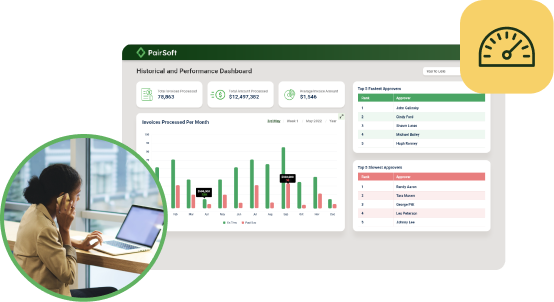
Wadih Pazos
Wadih founded both PairSoft and PaperSave. He is an avid technologist who specializes in streamlining operations and maximizing productivity.
View all posts by Wadih PazosWadih Pazos

Earlier this month, TechNavio forecast the BPM-as-a-Service market alone to expand by more than 37 percent by 2019 compared to 2015, and this is only one segment of the business process technology industry at large. More firms as taking the outsourced services approach to BPM modernization and optimization given the inherent benefits of cloud computing, and leaders who have not yet begun to consider this methodology should do so soon.
One of the main problems companies face when digitizing their BPM frameworks involves the functionality and interoperability of legacy apps – notably the ones that the firm does not want to simply throw out of the window. TechTarget recently published a blog post by Tom Nolle regarding the use of advanced BPM strategies to actually bring legacy apps up to par with today’s standards, specifically through the re-engineering of the software.
Once the models have been ironed out, though, Nolle asserted that the analysis of applications – especially legacy ones – will need to be taken care of diligently to eventually leverage a modernized BPM framework for projects involving the re-structuring of software and systems. At the end of the day, business leaders will need to walk before they can run, and this means taking intelligent steps toward both the re-engineering of legacy apps and the deployment of new BPM strategies. According to the author, there is plenty of groundwork that must be covered to actually make such a strategy a reality, including the identification of key BPM components and the definition of models through which transactions will occur. He affirmed that the three core models for this involve standard, stream, and analytics transactions, and one firm might have reason to use each of these models for varying purposes in the long run.
Harvard Business Review recently reported that some companies – likely those that are way ahead of the BPM modernization curve – are creating and utilizing algorithms to better craft and execute relevant strategies. This might be somewhat of a far-off pursuit for some organizations today, but represents a clear path toward optimal BPM performances, as algorithms can better uncover insights and needs than traditional analysis.
The source noted that machine learning is becoming a more common component of modern IT and operational management, and it is only a matter of time before the BPM industry moves more wholly in this direction. Decision-makers ready to take their BPM frameworks to the next level of performance should consider working with a managed services firm that offers support and solutions for these endeavors.


Many organizations start with manual receipt handling, fragmented card feeds and slow AP processes. Implement AI agents to auto-capture receipts, route approvals, enable punch-out buys and post to the ERP.
Result: faster batching, fewer errors and cost savings. “This saves us hours every month.”
Many organizations face slow, paper-heavy AP and fragmented procurement that waste time and inflate costs. AI Agents can automate approvals, PO matching and record sync to improve speed, accuracy and control. Client quote: “It freed up hours and made our process reliable.”
Operational drag and rising costs slow growth: teams waste time on manual tasks, misaligned priorities and opaque processes. AI Agents help automate routine work and coordinate actions across teams. “We’ve lost time to repeats and handoffs,” says a typical client.
Companies struggle with manual procurement, fragmented approvals, and costly integrations that slow growth and obscure spend. Our AI Agents streamline requisitions, POs, and invoice matching to cut manual work and improve visibility. “We were wasting time and missing insights,” says a client.

Many teams start with fragmented PO/AP systems, manual matching and delayed financial reporting. Deploying AI agents to automate PO checks, real-time encumbrance tracking and invoice matching reduces processing time and errors, delivering live budgets and faster closes. “Finally, we can see current balances and approve instantly.”
Many companies juggle growing invoice volumes and legacy systems. They struggle with manual processes, compliance gaps and limited headcount. Our AI Agents automate integrations, enforce rules and surface exceptions. The typical outcome: faster closes and measurable ROI. “We stopped chasing invoices.”